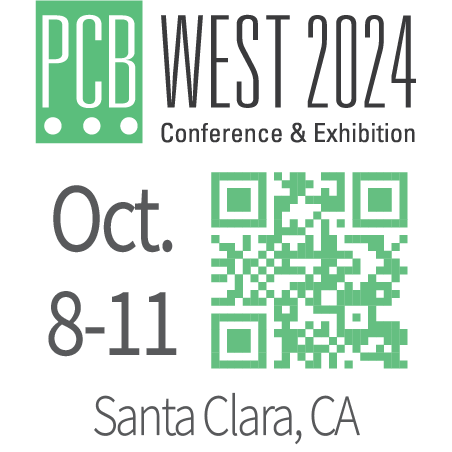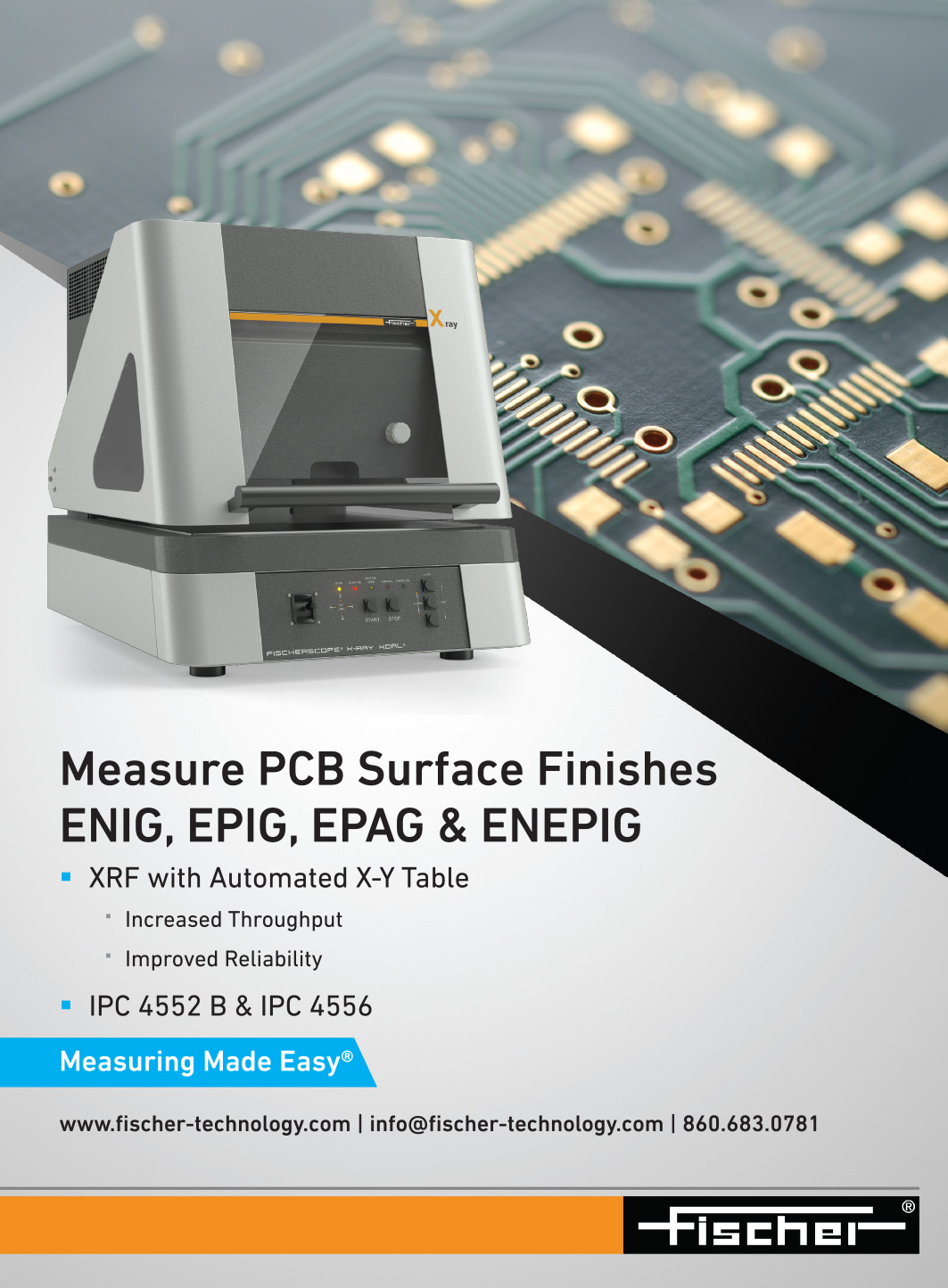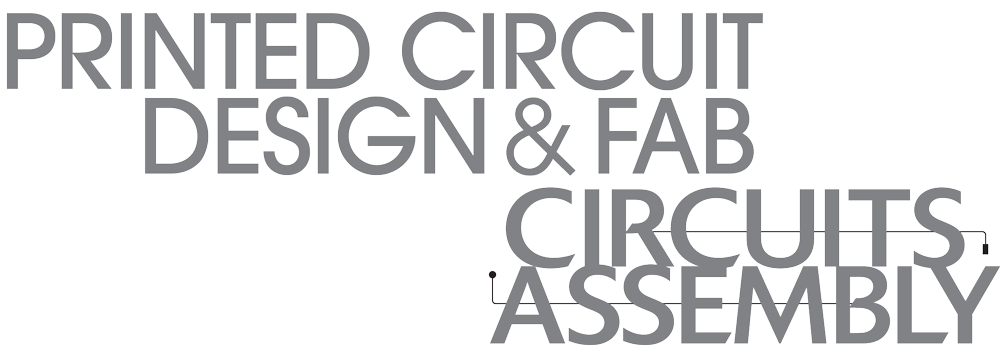


June 2025

This issue of PCD&F / CA is brought to you by:



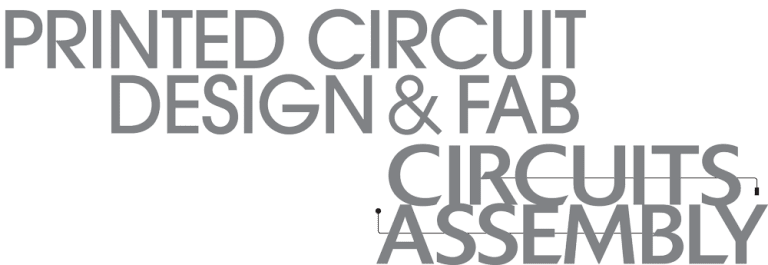
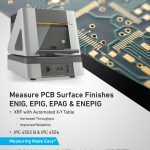


PCEA
PO BOX 807
AMESBURY, MA 01913
PCEA BOARD OF DIRECTORS
Stephen Chavez, CHAIRMAN
Susy Webb, VICE CHAIRMAN
Justin Fleming, SECRETARY
Anaya Vardya, TREASURER
MEMBERS
Jim Barnes
Michael Buetow
Tomas Chester
Douglas Dixon
Juan Frias
Richard Hartley
Matthew Leary
Charlene McCauley
Eriko Yamato
pcea.net
PUBLICATION
- PCD&F/Circuits Assembly digital.pcea.net
WEBSITES
- PCD&F pcdandf.com
- Circuits Assembly circuitsassembly.com
NEWSLETTER
- PCB Update pcbupdate.com
PODCASTS
- PCB Chat pcbchat.com
EVENTS
- PCB West pcbwest.com
- PCB East pcbeast.com
- PCB Detroit pcea.net/pcb-detroit
EDUCATION
- PCB2Day pcb2day.com
- PCEA Training pceatraining.net
- Printed Circuit University printedcircuituniversity.com
AWARDS PROGRAMS
- Service Excellence Awards circuitsassembly.com
- NPI Awards circuitsassembly.com
pcdandf.com

mike@pcea.net
frances@pcea.net
Jeffrey Beauchamp, Peter Bigelow, Robert Boguski, John Burkhert, Jr., Stephen Chavez, Mark Finstad, Geoffrey Hazelett, Nick Koop, Jake Kulp, Alun Morgan, Susan Mucha, Greg Papandrew, Chrys Shea, Jan Vardaman, Gene Weiner
production@pcea.net
nathan@pcea.net
frances@pcea.net
will@pcea.net
frances@pcea.net
mike@pcea.net
jacqueline@pcea.net
PRINTED CIRCUIT DESIGN & FAB/CIRCUITS ASSEMBLY is distributed without charge to qualified subscribers. To subscribe, visit pcdandf.com or circuitsassembly.com and click on Subscribe.
For changes or cancellations to existing subscriptions: subscriptions@pcea.net
PRINTED CIRCUIT DESIGN & FAB/CIRCUITS ASSEMBLY is published monthly by Printed Circuit Engineering Association, Inc., PO Box 807 Amesbury, MA 01913. ISSN 1939-5442. GST 124513185/ Agreement #1419617.
© 2025, by Printed Circuit Engineering Association, Inc. All rights reserved. Reproduction of material appearing in PRINTED CIRCUIT DESIGN & FAB/CIRCUITS ASSEMBLY is forbidden without written permission.

Can DoE Program Energize PCB Technology?
Among the many surprises at PCB East this spring was the appearance of a pair of scientists from a semi-obscure (to we laypeople) government contractor called, obliquely, JLab.
JLab is shorthand for Jefferson Lab, or its official name, the Thomas Jefferson National Accelerator Facility (TJNAF). The facility is operated on behalf of the US Department of Energy, which has a budget larger than Jabil or Flex, and oversees, among other things, the US nuclear arsenal.
Now, in the event you haven’t been paying attention, the US government has been in the media kind of often of late, for reasons too numerous for this page to detail. But one big newsworthy item has been the administration’s efforts to change the federal government’s budget priorities.
READ FULL ARTICLE
AMD to Sell ZT Systems Manufacturing Business to Sanmina for $3B
SANTA CLARA, CA – AMD has entered into a definitive agreement to divest ZT Systems’ US-based data center infrastructure manufacturing business to Sanmina for $3 billion in cash and stock, including a potential $450 million contingent payment.
As part of the agreement, Sanmina becomes AMD’s preferred new product introduction (NPI) manufacturing partner for rack-scale and cluster-scale AI infrastructure. AMD will retain ZT Systems’ design and customer enablement teams to continue supporting rapid deployment and high-quality AI solutions for cloud providers.
The transaction, expected to close by the end of the year pending regulatory approval, fulfills AMD’s stated intent from its 2024 ZT Systems acquisition to partner out the manufacturing portion of the business.
Siemens to Acquire Wevolver
MUNICH – Siemens Digital Industries Software announced its intent to acquire Wevolver, a move that will enhance its previous acquisition of Supplyframe platform by extending its global reach, adding to its content capabilities and strengthening digital marketing and campaign execution. Terms of the acquisition were not disclosed.
Supplyframe, acquired by Siemens in 2021, delivers real-time insights into design intent, demand, supply, and risk factors for the electronics industry. The addition of Wevolver brings a broader audience of hardware and software engineers to the platform, fostering a deeper connection with professionals involved in early-stage product research and innovation.
“The future of product development starts with smarter design decisions – and that means meeting engineers where innovation begins,” said Steve Flagg, CEO and founder, Supplyframe. “By joining forces with Wevolver, we’re not just expanding our reach; we’re accelerating a new era of design-to-source intelligence that’s collaborative, data-driven and built for the speed of tomorrow’s manufacturing.”
READ FULL ARTICLESyrma to Add Bare Board Manufacturing
MUMBAI – Syrma SGS Technology in May approved the incorporation of two wholly owned subsidiaries to manufacture electronic components, bare printed circuit boards, component assembly and manufacturing interface cards and other electronic components.
The measure marks an expansion of the company’s traditional EMS focus.
Syrma’s revenue for the fiscal year ended March 31 was 2.3 million rupees ($269 million), up 23% year-over-year.
MKS Breaks Ground on $40M Thailand Facility
ANDOVER, MA – MKS Instruments has begun construction on a $40 million chemical manufacturing facility and technical center near Bangkok.
The new site aims to support Southeast Asia’s PCB and advanced packaging sectors.
The 27,000 sq. m site will offer chemical production, plating technologies, labs and regional service, with operations expected in 2027
Lacroix to Exit North American Market by End of Year
SAINT-HERBLAIN, FRANCE – Lacroix announced plans to fully exit its North American electronics operations by the end of the year as part of a shift toward higher-potential activities in Europe and environmental solutions.
The company will explore options for its North American operations, including sale, shutdown or liquidation. It will also seek to pare its dependence on the automotive sector.
The exit follows sustained losses and worsening conditions at Lacroix Electronics, which operates in Juarez, Mexico and Grand Rapids, MI.
READ FULL ARTICLECofactr Acquires Hardware Sourcing Provider Cogbase
NEW YORK – Cofactr has acquired Cogbase, a hardware sourcing platform with a network of over 450,000 suppliers, to strengthen and scale supplier options for US manufacturers. Terms were not disclosed.
The acquisition will permit Cofactr to automate sourcing for complex parts while reducing the average time spent on vetting suppliers.
Cofactr will integrate Cogbase’s automated sourcing capabilities, including 2-D/3-D drawing uploads, specification matching and supplier outreach.
Read Full ArticleCelanese to Divest Electronics Business
DALLAS – Celanese is preparing to sell its Micromax electronic inks and paste unit as part of a broader push to cut debt and raise cash. The business, housed within its engineered materials division, is expected to bring in over $300 million in revenue this year.
The company aims to generate $1 billion from divestitures over the next 30 months, with Micromax positioned as the first in a series of sales.
The company was developed by DuPont and acquired by Celanese during its $11 billion buyout of DuPont’s mobility and materials segment in 2022.
READ FULL ARTICLETechSearch Warns of Substrate Shortage by 2029
AUSTIN, TX – A supply shortage of build-up substrates is looming, starting in 2029, with tight conditions emerging as early as 2028, according to a new report from tech research firm TechSearch International.
In its latest Advanced Packaging Update, TechSearch says a surge in artificial intelligence hardware, particularly for training and inference workloads, is accelerating demand for high-bandwidth memory stacks and pushing substrate body sizes larger across server CPUs and high-end network switches.
The report, which includes a detailed capacity and demand analysis, emphasizes how this trend will affect the global supply chain for advanced packaging.
Read Full ArticleEpec Acquires Roca Printed Circuits
DALLAS – Epec Engineered Technologies’ NetVia Group division has acquired Roca Printed Circuits, a move aimed at enhancing both companies’ printed circuit board offerings.
Barry Finberg, president of Dallas-based Roca, said the partnership comes in response to global economic shifts and supply chain pressures: “Epec was the clear choice to uphold the standards of quality, pricing and delivery that Roca customers have come to expect.”
Epec has expanded its manufacturing facilities across the US, UK and Asia. Since acquiring NetVia in 2020, the company has doubled production capacity and now adds Roca’s operations to its Dallas-based footprint.
READ FULL ARTICLEKaynes Technology Acquires August Electronics
CALGARY, AB – Kaynes Technology India Limited has announced the acquisition of Canada-based August Electronics through its subsidiary, Kaynes Canada Ltd. The transaction was expected to close by the end of May, pending regulatory approvals.
August will continue to operate under its existing structure, with CEO Tanya Korenda remaining in her role, while Co-Founders Jack Francis and Peter Wilson will step away.
“There is a tremendous alignment between August and Kaynes in terms of culture, capabilities and customer focus,” said Korenda.
READ FULL ARTICLEPCD&F
AGS Devices will license and cobrand the Celus Design Platform.
Duro announced its technology partner program and initial members.
DuPont filed an initial Form 10 with the SEC to separate its Electronics business into a standalone company, temporarily named Novus SpinCo1.
The FCC in May unanimously approved rules banning Chinese labs considered national security risks from certifying electronic devices for use in the US.
Laird Thermal Systems has rebranded to Tark Thermal Solutions.
Read Full ArticleCA
3C Tae Yang, a South Korean electronics and semiconductor firm, is eyeing Kalaburagi as a site for setting up its first manufacturing unit in India.
4Front Solutions has installed a second Seica Pilot V8 Next flying probe tester.
APE is expanding into contract assembly and repair services.
BEST Inc. now offers full-service electronic component salvaging, including BGA reballing and reconditioning.
Canadian Circuits introduced a prototype PCB assembly service.
Read Full Article
PCD&F
The Ranger Group named Paul Brionez senior electrical engineer.
TTM Technologies announced the retirement of founder and board member Kent Alder.
Flexium elevated Chen Chin-Yuan to president.
CA
Aligned Solutions appointed Bryce Timms regional sales representative for Ohio, Kentucky and Western Pennsylvania.
Altus Group promoted Steve Leake to sales engineer.
Ana Wold Garcia launched AW Manufacturing Solutions, an EMS rep firm.
Avalon Technologies named Curt Anderson director of business development.
Axxon-Mycronic promoted Eric Ting to sales director, Southeast Asia.
Read full article
PCB West Technical Conference Announced
PEACHTREE CITY, GA – The Printed Circuit Engineering Association announced the technical program for PCB West 2025, featuring more than 125 hours of in-depth electronics engineering training spread over more than 50 sessions. The program includes 30 classes new to PCB West, PCEA added.
 Among the industry experts scheduled to speak this year are Rick Hartley, Susy Webb, Stephen Chavez, Chuck Corley, Karen Burnham, Tomas Chester and Charlene McCauley. The conference will be held Sept. 30 to Oct. 3 at the Santa Clara (CA) Convention Center and features classes for every level of experience, from novice to expert.
Among the industry experts scheduled to speak this year are Rick Hartley, Susy Webb, Stephen Chavez, Chuck Corley, Karen Burnham, Tomas Chester and Charlene McCauley. The conference will be held Sept. 30 to Oct. 3 at the Santa Clara (CA) Convention Center and features classes for every level of experience, from novice to expert.
The scope of classes ranges from designing all types of printed circuit boards to complex signal and power integrity and power delivery systems design. Foundational topics such as circuit grounding, signal integrity and PCB stackups are interspersed with advanced tutorials on switch mode power supplies, EMC, DDR5, thermal management, RF and mixed-signal design and more.
Read Full ArticlePCB East 2025 Basks in Higher Attendance, Conference Plaudits
PEACHTREE CITY, GA – Attendance for the PCB East 2025 exhibits rose nearly 4% year-over-year, the Printed Circuit Engineering Association announced. Attendance among the exhibits-only category was up 15% from a year ago.
The annual trade show was held Apr. 29 through May 2 at the Boxboro Regency Hotel and Conference Center in Boxborough, MA. In all, more than 65 leading suppliers of electronics design tools, manufacturers of bare boards and assemblies, suppliers of fabrication and assembly equipment and materials, and related industry companies exhibited at the show.

Design Certification Classes Announced
PEACHTREE CITY, GA – The next series of live Certified Professional Circuit Designer (CPCD) training and certification classes is starting this month. The class meets once a week between June 23 and July 21.
The career development sessions are for printed circuit engineers, layout professionals, and other individuals currently serving in the design engineering industry or seeking to get into it. The instructor-led classes cover the gamut of printed circuit design engineering, from layout, place and route to specifications and materials to manufacturing methods. Schematic capture, signal integrity and EMI/EMC are also part of the comprehensive program.
Subsequent sessions begin in August, September and November. Classes will be held once a week over five weeks. Each class is 40 hours long and includes a copy of Printed Circuit Engineering Professional, a 400-page handbook on circuit board design, and the optional certification exam recognized by PCEA.
Read Full ArticleAbstracts Sought for PCB East 2026
PEACHTREE CITY, GA – Abstracts for next year’s PCB East technical conference are due Sept. 5. The conference, the largest of its kind in New England, takes place next spring in the Boston suburbs, and focuses on training and best practices for printed circuit board design engineers, electronics design engineers, fabricators and assemblers.
Papers and presentations of the following durations are sought for the technical conference: one-hour lectures and presentations; two-hour workshops; and half-day (3.5-hour) and full-day seminars. Preference is given to presentations of two hours in length or more, and no presentations of less than one hour will be considered.
Abstracts of 100-500 words and speaker biographies should be submitted to PCEA. Papers and presentations must be noncommercial in nature and should focus on technology, techniques or methodologies related to printed circuit board design, fabrication, assembly, test, components or packaging, and additive manufacturing.
Read Full ArticleASSOCIATION NEWS
Networking. The PCEA Discord server brings together engineers and designers from around the world on a private channel to discuss technical questions and career opportunities. To join, contact PCEA.
CHAPTER NEWS
Orange County. The next chapter meeting is July 22 at the Siemens Costa Mesa facility (located within The MET at 535 Anton Blvd, Costa Mesa, CA). Stephen Chavez of Siemens will speak on Optimizing Engineering to Manufacturing Efficiencies. Contact Armando Saldana for more information.
Portland, OR. Our June 26 meeting starts at 12 p.m. Pacific and features renowned SI expert Don Telian. Thank you to our May presenter, Daniel Lindmark of Allspice.io, who shared higher-level details on design for manufacturing challenges and solutions. Contact Stephan Schmidt for details.
San Diego. Still finalizing plans for an in-person meeting this summer.
Silicon Valley. The Silicon Valley Chapter will hold a lunch-n-learn meeting in Fremont on June 19 from 11:30 a.m. to 1:30 p.m. Pacific. The topic is Demystifying Manufacturing Validation from a PCB Designer’s Point-of-View, presented by Jayson Harames, application engineer consultant with Siemens. To reserve a seat, email Bob McCreight.
Richmond, VA. Our kickoff meeting is on June 11 at 12 p.m. EST and features a presentation from Dan Beeker of NXP Semiconductor. Contact membership@pcea.net for the Zoom meeting link.

Taiwan’s PCB Industry to Grow 6% to $40B in 2025
TAIPEI – Taiwan’s PCB industry is projected to reach $39.9 billion this year, growing 5.8% year-over-year, according to a joint report released in May by the Taiwan Printed Circuit Association (TPCA) and ITRI’s Industrial Economics and Knowledge Center. Last year, the industry recorded $37.7 billion, an 8.1% rise fueled by strong demand for AI server applications.
The materials segment saw a significant boost, growing 13.4% to $10.7 billion last year compared to the year prior. Rigid board materials accounted for more than half of this, with high-end copper-clad laminates (CCL) and low-loss materials leading demand for use in 800G switches and AI/HPC servers.
Flexible PCB materials are gaining traction in emerging technologies like smart glasses, which are expected to grow this year. Taiwan is developing low-loss substrates and transparent PI to support this shift. The flexible materials market is projected to grow 8.5% this year compared to last year, reaching $11.6 billion. (more)
Hot Takes
Taiwan reported record-high export orders for April, up 19.8% year-over-year, driven by strong global demand for artificial intelligence applications. The electronics sector grew 35% to $23.1 billion. (Ministry of Economic Affairs)
Semiconductor sales reached $167.7 billion in the first quarter, up 18.8% from the previous year, but down 2.8% from the previous quarter. March sales were up 1.8% month-over-month. (SIA)
While first-quarter electronics sales dipped 16% quarter-over-quarter and remained flat year-over-year, IC sales posted a 23% annual increase, fueled by AI and data center demand, and capital expenditures rose 27% year-over-year. (SEMI) (more)
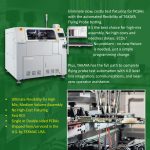
A Taxing Moment in History
Tariffs always have an effect. It’s usually not the intended one.
Tell me it isn’t so. Tell me we are not going back, excuse me, that’s backwards, to when I began my career in the 1970s! As you age, you remember the way things were, for better or worse. And in my case, add being a student of history, albeit a casual one, as well as a selective packrat of industry periodicals. Together, looking at the current state of the global world of technology, the trajectory certainly appears less forward and more backward.
In the 1970s, America was an epicenter of manufacturing, including electronics and technology. Then Japan and Taiwan began to outperform the US in terms of quality and value. At that time, South Korea, Vietnam, Thailand and even China were not yet mainstream economic engines. The time-to-market for new technology stretched years. While innovation flourished, double-digit inflation hindered any single company or nation from profitably funding significant technological advancements.
Business executives are resourceful, however. Western countries, led by the US, began to study how Japan was transforming its economy into one that produced cost-effective and high-quality products. One of the most notable observations was how Japanese companies began to source components and sub-systems from lower-cost countries. Even more importantly, Japanese companies invested in building manufacturing facilities in lower-cost countries and taught the local workforce how to produce the quality products the Japanese required. By observing and copying the successes that Japan and Taiwan enjoyed, the modern global supply chain came to life.
Read Full Article
Thailand PCB Manufacturing Progresses but Needs Time to Mature
An in-person visit reveals unrealized potential.
It’s been almost two years since the authors’ first visit to Thailand, which occurred just after Covid travel restrictions were lifted. We first reported on our impressions of Thailand’s PCB manufacturing environment in August 2023.
On our first visit, ground was just being broken on several large facilities funded mostly by Chinese parent companies. These new plants are located a few hours outside Bangkok in large industrial parks with wide roads and plenty of land between neighboring factories.
On what was cleared land just two years ago, newly constructed modern facilities now stand, with room for an additional building or two. These new factories have large floor plans for each of the major processes involved in making a printed circuit board.
Read Full Article
Navigating Paradigm Shifts
2025 is going to have a lot of surprises.
The political winds of change present challenges and opportunities for electronics manufacturing services (EMS) companies this year. This shift creates many challenges for EMS program managers. My April column discussed how to address customer tariff concerns. Here I will focus on the dynamics of market uncertainty.
IPC’s April market trend data provide valuable insight into changing dynamics in the manufacturing sector. According to the US Federal Reserve, domestic factory output was up 0.7% year-on-year in February, predominantly driven by an 8.5% surge in motor vehicle production. US output showed renewed weakness in April, however, with the Purchasing Manager’s Index (PMI) declining to 48.7 from a year to date high of 50.9 in January. IPC’s EMS book-to-bill ratio data show shipments rose 0.2% in March compared to the previous year, while bookings climbed 12.7%. April orders pushed the EMS book-to-bill ratio to 1.37, its highest level since November 2022.
So, what do these contradictory data mean for program managers? The short answer is that customers are reacting to market uncertainty. Tariff concerns have incentivized material pull-ins to get ahead of tariff cut-ins. Since tariff rates have become a matter of negotiation rather than fixed policy decisions, this situation adds another layer of uncertainty to the market, complicating the program management role. Nevertheless, one rule of program management never changes: you can’t control what happens, but you can control how you respond.
Read Full Article
Designing for High-Pin Count Devices
Overcoming “anywhere but here.”
As the devices shrink in pitch and increase in pin count, current density becomes a concern. The outer rows of devices typically have lots of signal pins, while center pins focus on power and ground. This situation means that designers must reserve the first few layers of the board specifically for fan-out (Figure 1).

One of the worst mistakes when dealing with a BGA of 1,000 pins is to drop a via deep into the board for pins on the device’s edge. Be ready to use every lane of the first three layers, and route layer 2 through the air gaps between the other two.
Read Full Article

Lateral Thinking and Simplicity Can Power Our Quest for Decarbonization
Can today’s sustainability drive turn on a solution from the past?
As global trading and economic power dominate the news, it’s essential to consider the significance of the world’s electric vehicle markets in these developments. Western and Japanese car manufacturers are realizing that China has a huge lead in electric vehicle technology and a large, receptive domestic market that fuels the success of its local brands.
Brands that historically relied on strong exports to China may never recover the ground lost against these emerging domestic players, which offer cutting-edge products at lower prices. Chinese industry data calculate that battery EVs already represent about 25% of the country’s new car market and that China has been the world’s top producer in the new energy vehicles category for the past 10 years consecutively.
EV technology has rapidly advanced, with key targets focused on increasing driving range and reducing charging time. Range anxiety remains a significant barrier to widespread EV adoption and has resulted in vehicles equipped with large and heavy batteries. Their weight and bulk can compromise drivability and cause technical and environmental problems. Moving the vehicle demands a large quantity of energy, even though the powertrain may achieve extremely high energy-conversion efficiency.
Read Full Article
Beyond the Bend: Practical Guidelines for Flex and Rigid-Flex Design
A bend radius lower than the recommended minimum needs a closer look at the details.
It seems self-evident that designers create a flex or rigid flex because the part must bend. That does not tell the whole story, however. We need more information to ensure the design works in the application as intended.
For starters, are we talking “Use A” (flex to install), or “Use B” (dynamic flex)? I estimate that 95% or more of the flex designs are Use A; truly dynamic uses are rare. Let’s talk first about flex to install.
For flex to install, rules of thumb are well-defined. IPC design guidelines establish that for 1- and 2-copper layer circuits, the bend radius should be at least 10 times the thickness of the flex. For circuits with three or more bonded flex layers, the rule of thumb is 20 times the thickness. The key for parts with multiple unbonded flex layers is to select the thickest set of bonded flexes for the radius assessment. For example, if the part is five flex layers but is unbonded between the second and third flex layers, making a 2- and 3-layer section, do your assessment on the thickness of the 3-layer portion, not all five layers.
Read Full Article
Bluetooth Circuit Board Design Guidelines
Six steps for limiting interference and data loss.
by Andrew Gonzales and Jason Metzner
Printed circuit boards (PCBs) utilizing Bluetooth technology can encounter issues like interference, lost data and poor signal integrity if certain precautions aren’t taken. This guide outlines essential rules and guidelines for selecting Bluetooth technology for various applications and, more specifically, for integrating it into circuit boards.
A variety of applications utilize Bluetooth, including:
- Beacons used in shopping malls
- Eddystone frames for industrial sensing applications
- Headsets and audio/stereo products
- Remote peripheral devices such as video game controllers or computer mice/keyboards
- Home automation systems
- Wireless consumer electronics applications, including cameras, printers and phones.
Each application incorporates the same common Bluetooth technology but adapts it based on connection types. Design engineers must apply fundamental principles to optimize signal integrity and enhance overall device effectiveness.
Read Full Article
Fundamentals of PCB Stack-up and Signal Integrity
A summary of how to order layers to achieve target impedance values.
by Akber Roy
Printed circuit boards are becoming highly dense, hosting all kinds of high-speed interfaces. The bandwidth of the clock frequencies reaches hundreds of GHz, leading to complex issues related to EMI interference, crosstalk, reflections, jitter and losses.
These new challenges impact all processes involved in design, analysis, manufacturing and testing. Manufacturers employ advanced and complex technologies and methods to accommodate the higher density of functionalities packed into smaller components. To manage losses and achieve desired functionality at higher speeds, research into new materials is leading and revolutionizing this industry. The PCB is at the center of issues related to signal integrity, power integrity, electromagnetic interference, crosstalk, mechanical, thermal and more. It also plays an integral role in solutions for each of these challenges.
These issues begin at PCB stack-up design, since a well-designed stack-up forms the foundation of a strong and stable PCB. It acts as the fundamental backbone of the PCB design structure that impacts signal integrity, power distribution and signal impedance. A sound and properly designed stack-up minimizes the circuit’s vulnerability to external noise and helps improve the electromagnetic compatibility of the product (Figure 1).
Read Full Article

AI in Electronics Manufacturing: What’s Working Now, What’s Not (But Should Be)
Artificial intelligence is superb at corralling volumes of data but still lacks the flexibility needed for many engineering tasks.
by Ryann Howard
AI is transforming electronics design and manufacturing, making significant strides in everything from procurement to PCB design, and even defect detection. But while there’s a lot AI can do today, there’s still a whole lot it can’t (yet). Here’s what’s really happening on the ground according to experts in the field.

The easy consensus among those we spoke with is that AI automates the repetitive stuff. At Celus, André Reggiani, AI product manager, highlights that AI is really shining when it comes to “retrieving tons of information from datasheets” and helping engineers “find the right components for their circuits.” No more scouring datasheets, crossing fingers that you’re not missing something important. It’s like having an incredibly efficient assistant, but with fewer coffee breaks.

Similarly, Zachary Feuerstein from Breadboard points to AI’s prowess in automating data extraction – think BoMs, RFQs, POs and supplier communications. “It can clean up unstructured data, extract part numbers and even handle back-and-forth emails with suppliers,” he says. This doesn’t just save time; it slashes the annoying admin work that no one signed up for in the first place.

Factors Contributing to Solder Ball Formation: A Guide
Improper paste viscosity and incorrect reflow ramp profiles are just a few of the root causes.
by Md. Imtiaz Uddin
Solder balls are small, spherical metallic balls that can form on circuit boards, typically around the leads or pads of surface mount components. Ranging from just a few micrometers to a couple of hundred micrometers in diameter, these balls form from issues in the soldering process.
If solder balls appear, they can affect the overall functionality of the circuit board. Small solder balls are unsightly and can move components slightly off mark. In the worst cases, bigger solder balls can fall off the surface and deplete the quality of the component joints. Worse, balls can roll onto other board parts, leading to shorts and burns.
Typically, solder balls are located on the side of chip components (Figure 1). Solder balls, which are typically between 0.2mm and 0.4mm in diameter, can occasionally be observed surrounding the pins of ICs and connectors.
Read Full Article
Mechatronics Assembly Techniques You Should Be Using in 2025
Ten techniques to ensure a smooth end-to-end process.
by Neil Sharp
From medical devices to monitoring systems, products are becoming smaller, smarter and more complex to manufacture, making mechatronics assembly the bedrock of innovation for forward-thinking OEMs. Modern mechatronics manufacturing no longer focuses solely on mechanical integration; it now fuses electronics, sensors, software and control systems in ways that demand tighter tolerances, smarter testing and leaner processes. Although core techniques remain relevant, recent developments in mechatronics assembly – such as the integration of Industry 4.0 technologies, automation and AI – means more modern techniques are emerging.
To meet the high level of skill, precision, accuracy and consistency that today’s mechatronic assemblies demand, here are 10 advanced mechatronic assembly techniques that ensure a smooth end-to-end process.


PCD&F

Amphenol RF Extends SMA Connectors Line
Amphenol RF SMA connectors are now compatible with 0.81mm and 1.32mm cable, engineered for secure, routable RF performance in harsh environments.
Features threaded coupling mechanism and support for up to 9GHz. Meets demands of Wi-Fi 7 and other high-frequency applications. Tested for 500 mating cycles and built with gold-plated brass and stainless-steel components. Suited for antennas, telecom and aerospace systems. Preconfigured and custom cable assemblies available.
Amphenol RF

Celus Upgrades Celus Design Platform
Celus Design Platform now includes Design Assistant, an AI-driven feature that creates full projects from a simple image or text command. Simplifies design workflows and reduces component selection errors. Identifies compatible components based on preferred vendor and creates complete schematic of the design. Offers access to thousands of cataloged parts.
Celus
CA

Cybord ShieldScan Visual-AI PCBA Inspection Tool
Cybord ShieldScan visual-AI printed circuit board assembly (PCBA) inspection software automates full PCBA mapping, detects anomalies in real time, and is said to ensure 100% board integrity, protecting manufacturers from supply chain tampering and security threats.
Is said to detect malicious hardware implants to prevent rogue chips from compromising security; detect missing components; detect unauthorized replacements; verify component origins to meet strict regulations, including US country-of-origin bans; and perform 100% visual verification of every component. Does not rely on BoM lists or CAD files. AI-driven optical character recognition (OCR) and natural language processing (NLP) ensure accuracy in analyzing manufacturer markings, lot codes, datecodes and compliance data.
Cybord

Master Bond EP3HTSDA-2Med Epoxy
Master Bond EP3HTSDA-2Med one-part silver filled epoxy is for high-speed medical device manufacturing. Offers high electrical conductivity and thermal performance. Meets ISO 10993-5 cytotoxicity standards.
Material cures at elevated temperatures and supports automated dispensing with a long working life at room temperature. Fine filler particles enable thin bond lines and low thermal resistance. Resists common sterilization methods like EtO and gamma radiation. Comes in syringe and jar formats.
Master Bond
Antenna Design
“Flexible Metasurface Loaded Felt Substrate Built Wearable Antenna with Tri-band and High Gain Features for WBAN Applications”
Authors: Dheeray Nagar, Prashant Ranjan and Atanu Chowdhury
Abstract: A low-profile tri-band wearable antenna is presented. The unique features of the proposed antenna design are as follows: 1) With the assistance of dual U-formed printed lines, the proposed wearable antenna works in three different frequency bands; i.e., 2.4GHz, 3.5 GHz and 5.5 GHz; and 2) the single metasurface placed on the backside of the antenna reduces specific absorption rate (SAR) by more than 90% and improves antenna gain (4.55dBi) in all three operating bands. The designed aerial and metasurface have total size of 46.12 × 51.8 × 1.3mm3 and 90 × 90 × 1.3mm3, respectively. Experimental results confirm that the designed aerial operates at 2.4-2.59GHz, 3.15-3.76GHz and 5.1-5.9GHz. Furthermore, the radius of curvature was shown to have no effect on the functioning of the developed antenna, which makes it ideal for on-body measurements. Additional studies on low-cost felt substrate-based antennas for wireless body area network (WBAN) applications may be motivated by this concept. (Journal of Electronic Materials, April 12, 2025, https://doi.org/10.1007/s11664-025-11910-x)
Read full article


